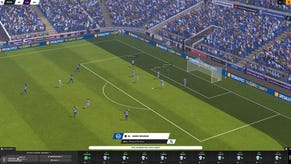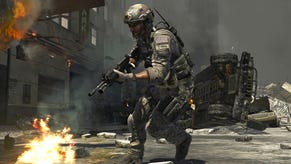Modern Warfare 3 Multiplayer
An in-depth report from COD XP in Los Angeles.
Iterating on the most successful multiplayer video game in the world today would be hard enough in solitude. But doing so in the centre of an online amphitheatre with 20 million voices screaming conflicting views of what to change and what to leave well alone must be nothing short of paralysing.
For every player you appease by, for example, reducing the damage value for the shotgun by 5 per cent, you outrage another. Competitive multiplayer shooters are cat cradle's of design choices. Tiny tweaks echo and amplify through the game, often with unanticipated repercussions. Change one and you change them all, risking losing what made you popular in the first place.
"Trying to manage tens of millions of voices is extremely challenging," admits Modern Warfare 3's producer, Mark Rubin speaking at the COD XP fan event in Los Angeles this week.
"But it's one of the things I firmly believe we are getting better at. The way in which we parse feedback has vastly improved so that now we are able to not only find the obvious stuff that the majority is saying regarding how to balance different guns or perks, but also the finer-detail stuff without a clear majority behind it. The truth is that no feedback is 'wrong'. For that player, it's truth. So it becomes a question of how we choose to act upon it."
There are, of course, some immovables. "Developing games is all about prioritising processing power," says Activision Publishing's CEO Eric Hirshberg. "Any game engine has to be immensely more efficient to render at 60 frames per second instead of 30, but that's what gives Call of Duty its quintessential feel. That's been our priority with MW3."
Likewise, the core matchmaking modes are all present and correct. Free-for-All, Team Deathmatch and Domination are each playable across the 16 maps that the game will launch with, while the majority of the perks - augmentations that can be applied to your character - return unchanged.
The RPG-esque experience system introduced by Call of Duty 4 that unlocks new perks, weapons and emblems is still the familiar backbone to the experience, although Infinity Ward claims this has been more meticulously balanced than ever before so as not to allow players at the top of the tree to dominate those at the bottom just for having invested more time.
But there are numerous headline tweaks to the format, amends that Robert Bowling, Infinity Ward creative strategist, claims make this "the most balanced Call of Duty experience ever." In addition to tweaks to map layout, speed of character movement and perks, "every area has been meticulously balanced," he says.
"We listened to the fans. As such there's no longer a Commando perk, no Last Stand, no shotgun as a secondary weapon. And we've added in more choices to support a wider variety of play-styles than ever before."
One Man Army and the game ending nukes of MW2 are also gone. Meanwhile, core to the support of different play styles is the reinvented Killstreak system from Modern Warfare 2, now redubbed the Pointstreak system.
In the previous game the team found that Killstreaks, bonuses awarded to players for unbroken chains of kills were too focused on player's gunning for kills. "In MW2 Killstreaks were basically optimised for Team Deathmatch play," says Bowling. "In objective-based games there was no benefit for the player who wanted to focus on clearing objectives. To combat that we've changed Killstreaks to the Pointstreak system, which rewards diverse play styles. Now it isn't just about kills: you earn points for assists, objectives and so on."
This broader, fairer system allows further specialisation by players. When selecting a loadout for their character, players can choose between three Strike packages to plug their Pointstreaks into, each one offering different bonuses and working in a fundamentally different way. The Assault Strike Package works in the same way as Killstreaks in MW2, rewarding players with offensive bonuses such as Predator drones and helicopters.
Meanwhile, the Support Strike Package offers support-style rewards such as UAVs, SAM turrets etc. In contrast to the Assault Strike package these do not reset on death, but instead accumulate over the course of the match. Lastly, the Specialist Strike package simply rewards players with new perks as they progress a Pointstreak. After the 8th consecutive kill your character receives every perk in the game, before resetting back to none when killed.
In play each system feels diverse thanks to the different preset strings of bonuses (28 in total across all three packages) but they've also been keenly balanced. The various benefits to each approach encourage teams to mix up their Pointstreak packages with a spread, thereby hopefully avoiding one being far more popular than the others in the months following the game's release.












.png?width=291&height=164&fit=crop&quality=80&format=jpg&auto=webp)




.jpg?width=291&height=164&fit=crop&quality=80&format=jpg&auto=webp)
